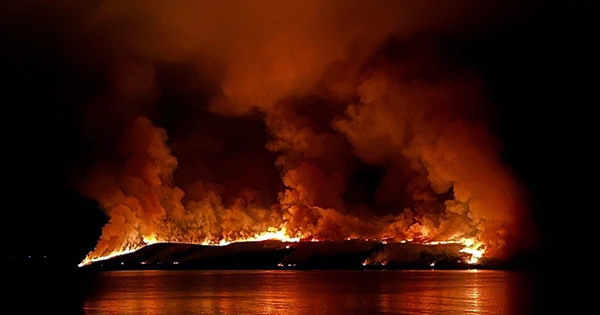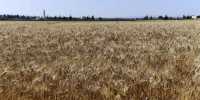A Scottish island where government scientists previously performed biological weapons tests with anthrax was consumed by “apocalyptic” flames over the weekend. According to BBC News, during the night of Saturday, March 26, Gruinard Island off the northwest coast of Scotland was burning from “one end to the other,” with eyewitnesses describing the image as “apocalyptic.” On the 2-kilometer (1.2-mile) long deserted island, the flames had mostly died out by Sunday, but most of the ground was still scorched and softly burning.
The recent flames are just the latest chapter in this island’s unexpectedly active history. Sleepy islands off the coast of Scotland aren’t renowned for their dramatic pasts, but the recent wildfires are just the latest chapter in this island’s surprisingly hectic history. Biological warfare experiments were carried out on Gruinard Island during WWII by British military scientists who were flirting with the concept of employing anthrax against Nazi Germany. One of these possible operations, codenamed “Operation Vegetarian,” would have entailed dropping linseed cakes with anthrax bacterial spores over German cattle farms in order to wipe off their food source while also indiscriminately sickening thousands of people.
Anthrax is an infectious illness caused by the bacterium Bacillus anthracis, which is transferred by the spores of the bacteria. The bacteria generally lives in soil spores and can live in this state for decades, waiting to infect an unsuspecting host. It can create a potentially deadly illness that manifests itself in a variety of ways depending on whatever portion of the body is affected.
Blisters, lumps, and sores can appear on infected skin, but breathing the germs can cause fever, coughing, disorientation, excessive perspiration, and extreme exhaustion. After hearing reports that the Axis countries were considering deploying anthrax as a biological weapon, the UK Ministry of Defense formed a top-secret panel of government experts to study the feasibility and risk of employing anthrax as a biological warfare agent.
Gruinard Island, located in the UK’s most remote region, was chosen as the ideal location by 1942. A sad herd of 80 sheep was transported to the island and became the victims. The animals were placed in strange stocks, unable to move, and positioned with their heads towards the area of the bomb denotation, as shown in declassified film of the experiment. A 13.6-kilogram (30-pound) bomb with Bacillus anthracis was dropped on the island in the summer of 1942, followed by a smaller 1.8-kilogram (4-pound) bomb the next year.
The sheep, as it turned out, all died within days of catching anthrax. A team of experts traveled to the island, dressed in somewhat eerie HAZMAT safety suits, to examine the sheep, dissecting their bodies to learn more about the disease’s consequences. The remains were then thrown into a makeshift incinerator on the island after being studied.
The UK government decided to buy the island a year after WWII ended, and quarantined it immediately. It wasn’t until 1986 that scientists, who had been vaccinated against anthrax and clad in protective clothes, went to the island to thoroughly disinfect the region by spraying the top layer of soil with seawater and formaldehyde. They also looked for anthrax antibodies in rabbits on the island, but found none, indicating that they had not been exposed to the infection.
“We feel that the odds of individuals or animals catching anthrax on Gruinard Island are so small that the island may be restored to civil usage,” a study stated in 1988. For a fee of £500, the island was returned to the original owner’s heirs two years later. The Ministry of Defence proclaimed it anthrax-free in April 1990. Despite this, the area has remained unoccupied to this day.
















